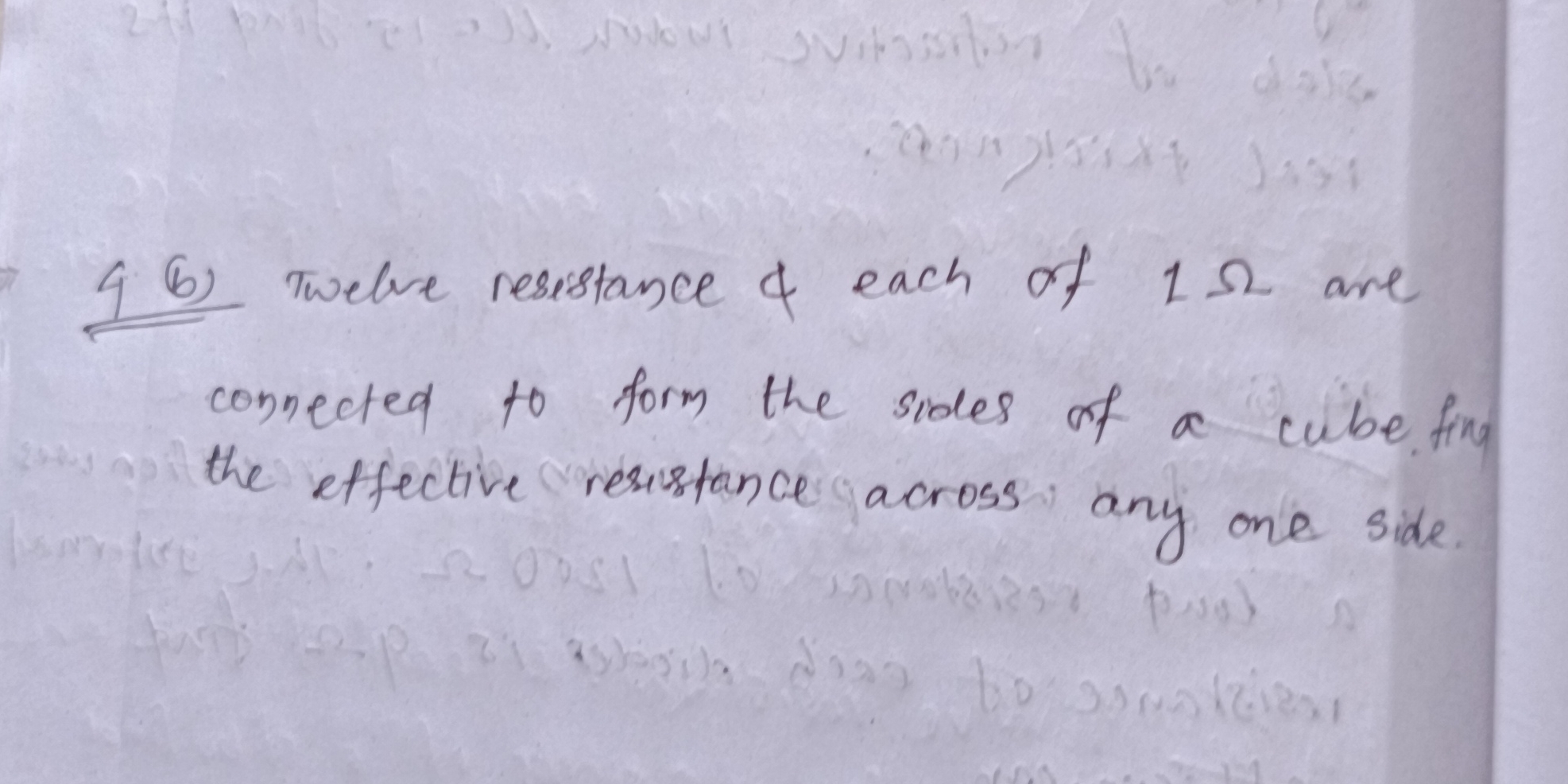Twelve resistors, each of 1 Ω, are connected to form the sides of a cube. Find the effective resistance across any one side.

Understand the Problem
The question is asking for the effective resistance across one side of a cube formed by connecting twelve resistors, each of 1 Ohm. To solve this, we need to analyze the configuration of resistors and apply the relevant formulas for calculating the effective resistance in both series and parallel circuits.
Answer
The effective resistance across one side is $1 \, \Omega$.
Answer for screen readers
The effective resistance across one side of the cube is $1 , \Omega$.
Steps to Solve
-
Identify the configuration of resistors The resistors are arranged to form the edges of a cube. Each edge of the cube has a resistor of 1 Ω, and there are 12 edges in total.
-
Understand the paths for effective resistance To find the effective resistance across one side of the cube (let's say between points A and B), we need to see how the resistors are connected. When we connect points A and B, there are multiple paths through which the current can flow.
-
Divide the resistances in parallel For the effective resistance across the side AB, there are three specific paths corresponding to the resistors on the cube:
- Path 1: A → C → D → B (3 resistors in series)
- Path 2: A → D → E → B (3 resistors in series)
- Path 3: A → C → E → B (3 resistors in series)
Since all paths are identical, we find the resistance of one path only.
-
Calculate resistance along one path Each path has 3 resistors in series, hence the resistance for one path will be: $$ R_{\text{path}} = R_1 + R_2 + R_3 = 1Ω + 1Ω + 1Ω = 3Ω $$
-
Calculate total resistance of these paths in parallel Three identical paths (each with resistance of 3 Ω) are in parallel. The formula for total resistance $R_{total}$ in parallel is given by: $$ \frac{1}{R_{total}} = \frac{1}{R_1} + \frac{1}{R_2} + \frac{1}{R_3} $$
Substituting the values: $$ \frac{1}{R_{total}} = \frac{1}{3Ω} + \frac{1}{3Ω} + \frac{1}{3Ω} = \frac{3}{3Ω} = 1Ω^{-1} $$
- Calculate effective resistance Now, taking the reciprocal gives the total effective resistance: $$ R_{total} = 1Ω $$
The effective resistance across one side of the cube is $1 , \Omega$.
More Information
This problem demonstrates the elegance of parallel resistors in a three-dimensional configuration. Each symmetrical path can effectively distribute the current, leading to a surprisingly low effective resistance.
Tips
- Forgetting to account for all paths: Students often miss one of the parallel paths in their calculations.
- Confusing series with parallel arrangements: It's essential to correctly identify which resistors are in series and which are in parallel to avoid calculation errors.
AI-generated content may contain errors. Please verify critical information